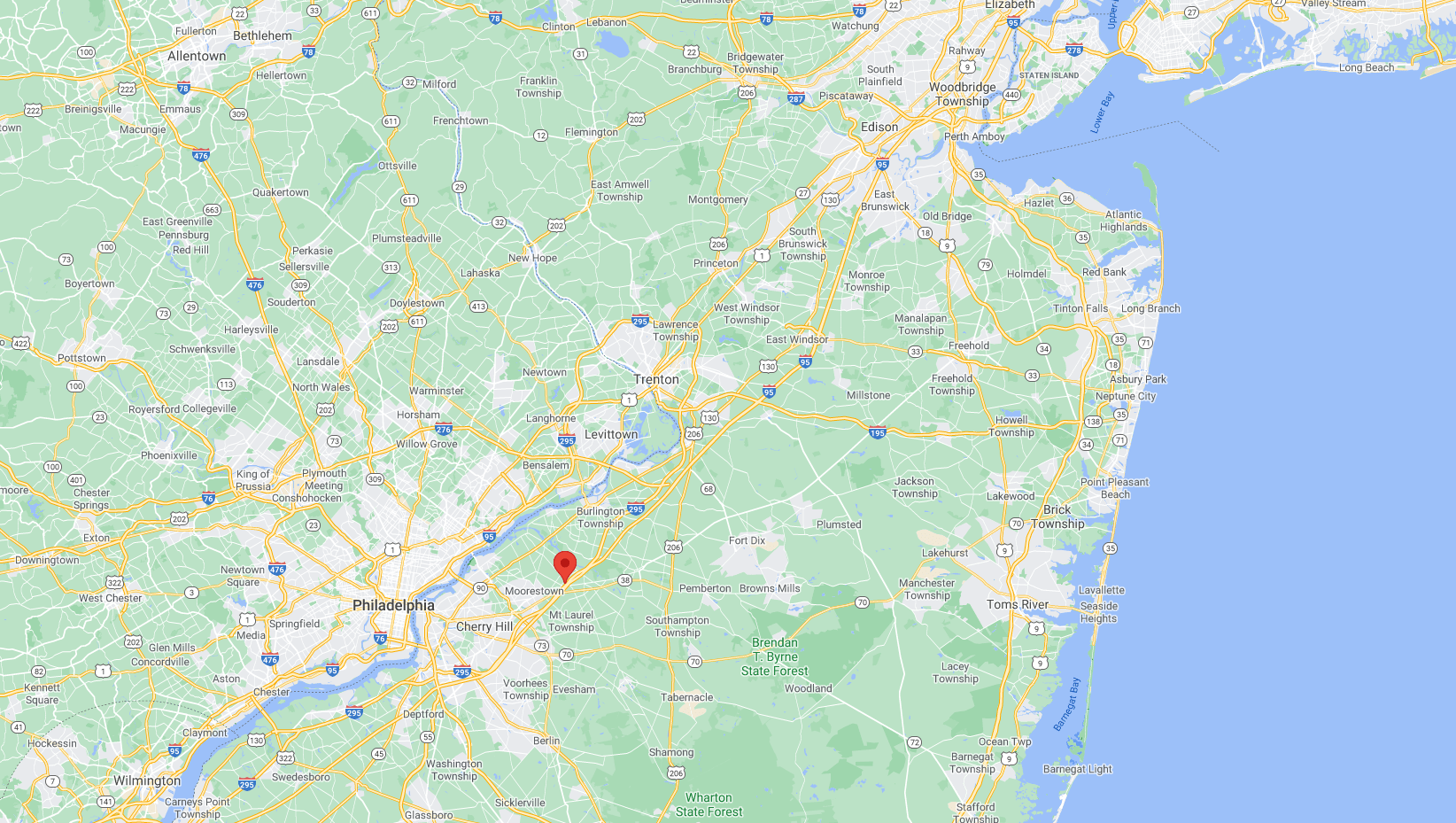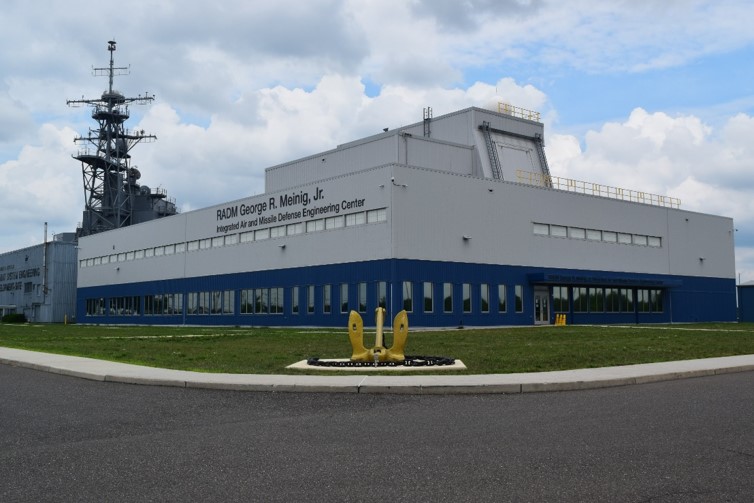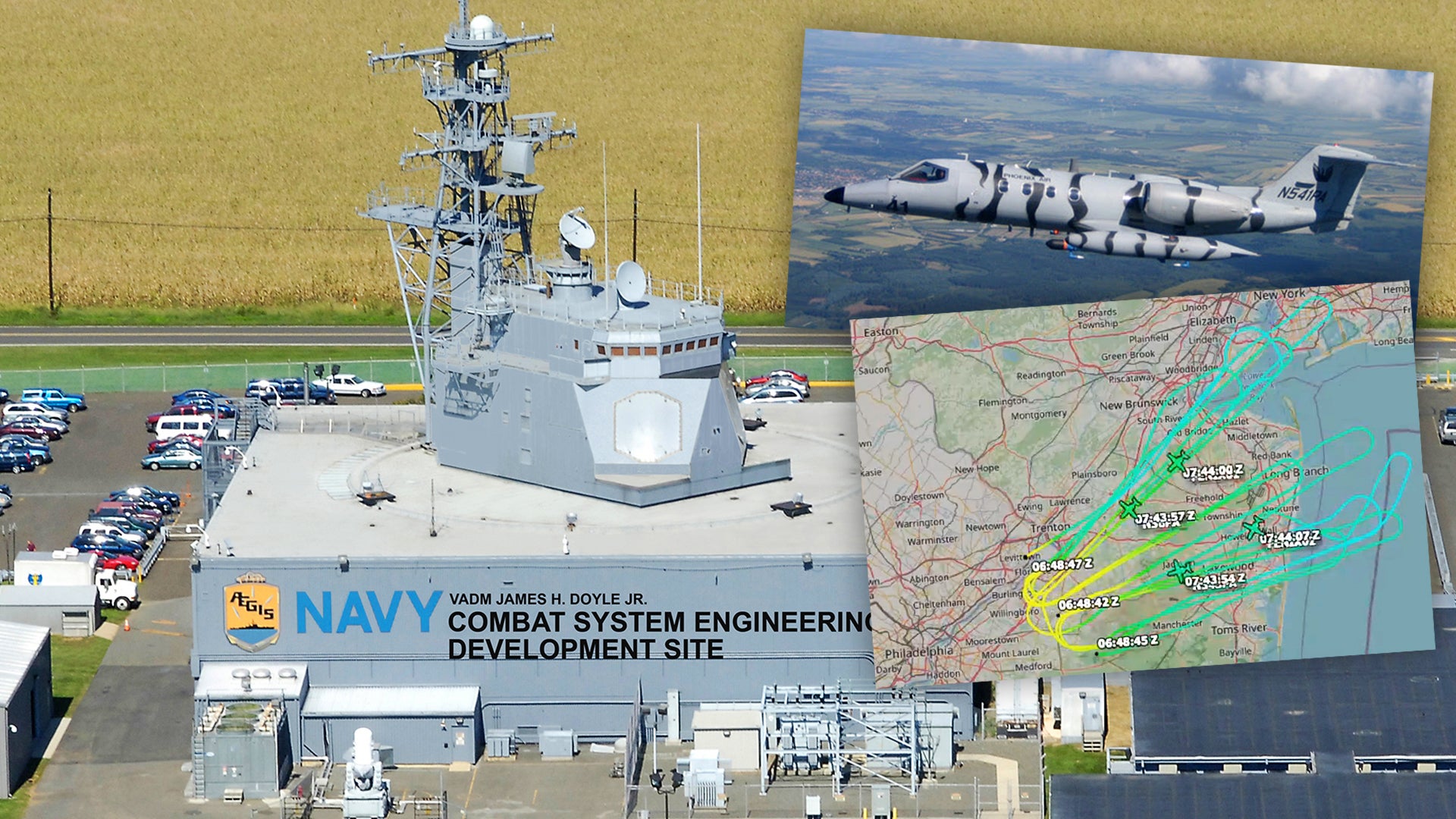It looks like contractor-operated Learjet 35 aggressor jets were putting the latest iteration of the U.S. Navy’s cutting-edge Aegis air defense system to the test last night, with a series of flights directed against the USS Rancocas, also known as “The Cornfield Cruiser,” a unique ship-like laboratory located in New Jersey, around 20 miles outside of Philadelphia. The Learjets were from Phoenix Air, whose other adversary support work is usually seen in a more traditional maritime context, acting as marauding cruise missiles and enemy airplanes for U.S. Navy ships to defend against. You can read more about what this actually looks like in practice in this previous feature.
John Wiseman, who tweets as @lemonodor, first brought our attention to this interesting aggressor activity. He had been alerted to the simulated attack runs by referencing publicly available flight tracking data. In fact, a bot that he has specially developed notified him that four aircraft — Learjet 35s with the U.S. civil registration numbers N32PA, N56PA, N71PG, and N545PA — were operating in close proximity, for roughly an hour, and over land.

The aircraft were operating from Joint Base McGuire-Dix-Lakehurst in New Jersey. Considering the flight patterns and the general location it seems glaringly obvious that the Phoenix Air jets had one particular target in mind: the USS Rancocas, more properly known today by its formal title, the Vice Admiral James H. Doyle Combat Systems Engineering Development Site, or CSEDS, in Moorestown, New Jersey. The Rancocas name is derived from the closest body of water to the installation, Rancocas Creek.
Carrying electronic warfare pods, the Phoenix Air Learjets are equipped to represent a range of different “bad guys” for target emulation. They may have been simulating anything from bombers to anti-ship cruise missiles, but all four seemed to be making obvious target runs directed at the CSEDS, in a wide line-abreast formation, flying between 16,000-18,000 feet and at a speed of about 300 knots. The repeated attack runs saw the aggressors fly out toward New York City, off the coast of Long Beach on Long Island, and off Lakewood in New Jersey, before returning to their target.
CSEDS is a facility devoted to research and development for the long-serving and often-improved Aegis system and is in fact a commissioned naval vessel, manned by Navy sailors and supported by civilian contractors. Its nickname, “The Cornfield Cruiser,” comes from the fact that it features the 122-foot-high superstructure of a major surface combatant and is equipped with all the sensors you would find on a U.S. Navy Aegis-equipped cruiser or destroyer. The ship-like structure looks freakishly out of place among the nearby fields.

As well as using aggressor jets to provide realistic threat simulation, it should be noted that the CSEDS facility can also test its systems by tracking commercial flights around New York City, a very practical and low-cost way of measuring its capabilities against more predictable aerial contacts.

The facility was first opened in 1977, but underwent a massive redevelopment in 2015. The expanded site has hosted the powerful SPY-6 radar system since October 2020.


As for the SPY-6, this radar is set to be installed on Flight III Arleigh Burke class destroyers and work has already begun to integrate it onto the first of those ships, the future USS Jack H Lucas, which is due to be delivered to the Navy in the 2023 Fiscal Year. “The radar will provide new and improved fleet capabilities, and installing and integrating it at the CSEDS will provide needed lessons learned to the Navy and its industry partners,” according to the service. One of the main advantages the SPY-6 will offer is the ability to simultaneously perform anti-air warfare and ballistic missile defense. Many other U.S. Navy ships are slated to receive a version of the SPY-6 known as the Enterprise Air Surveillance Radar (EASR). You can read all about this in this past feature story of ours.
The arrival of the SPY-6 actually marked the first significant hardware upgrade for the CSEDS since it received an array from the ill-fated USS Cole (DDG-67) in 2010, a decade after that warship was damaged in a terrorist attack in Yemen.
Testing the SPY-6 in this controlled environment on land will ensure that the Navy and the manufacturer can iron out any problems before the system is installed on a fleet warship. Having aggressor jets put it though its paces is a vital part of that and, with that in mind, we may well see similar mock attacks played out over “The Cornfield Cruiser” in the future.
With thanks to John Wiseman for alerting us to this story.
Contact the author: thomas@thedrive.com
